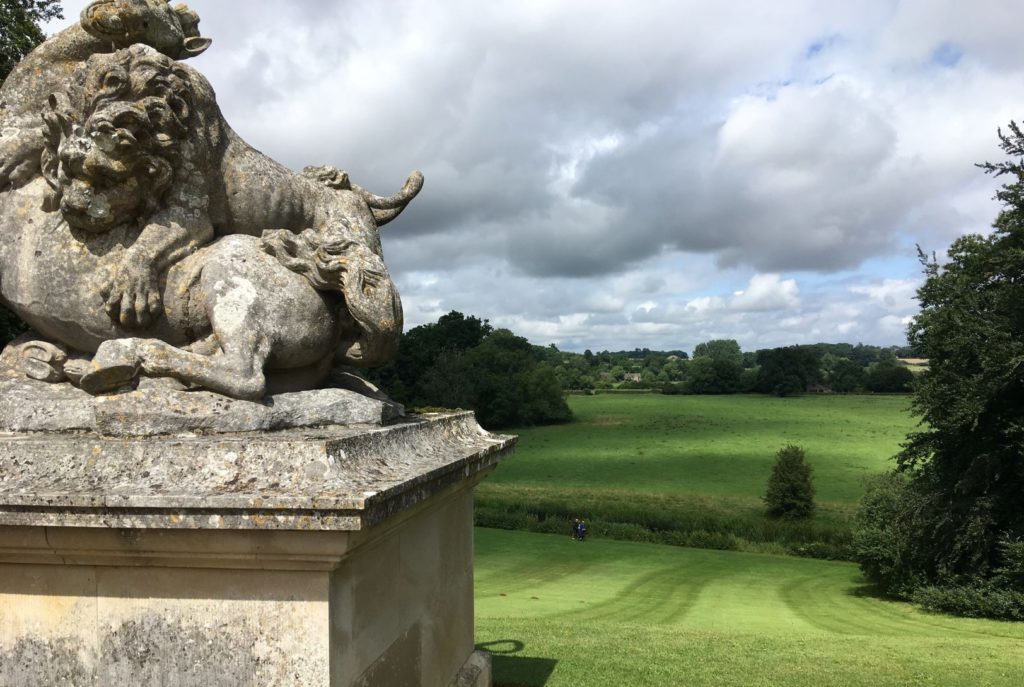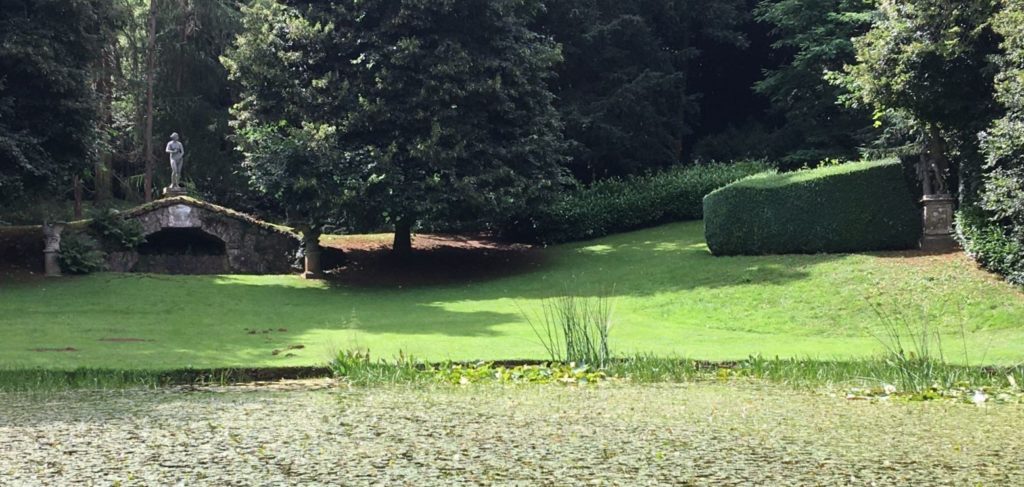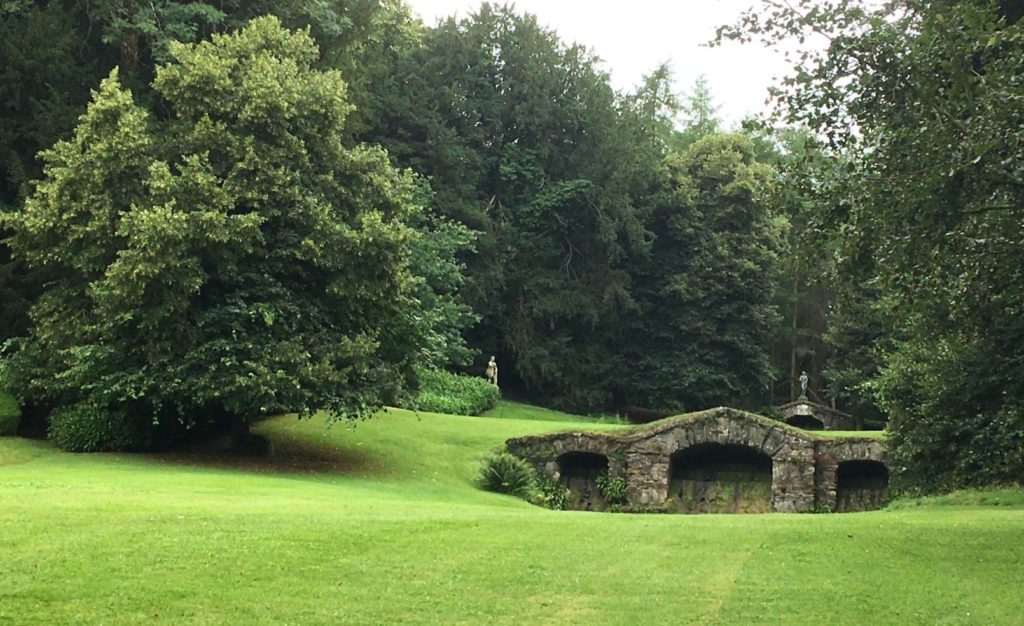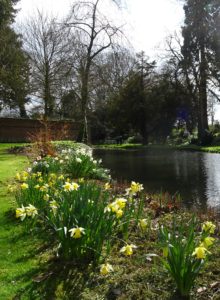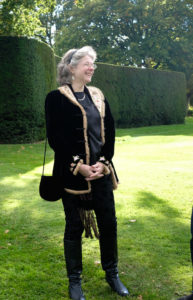The summer picnic at Rousham Park, Sunday 1st August
Monty Don believes that “Kent is the great genius of the eighteenth-century garden design and Rousham is his masterpiece, one of the greatest gardens in the world”
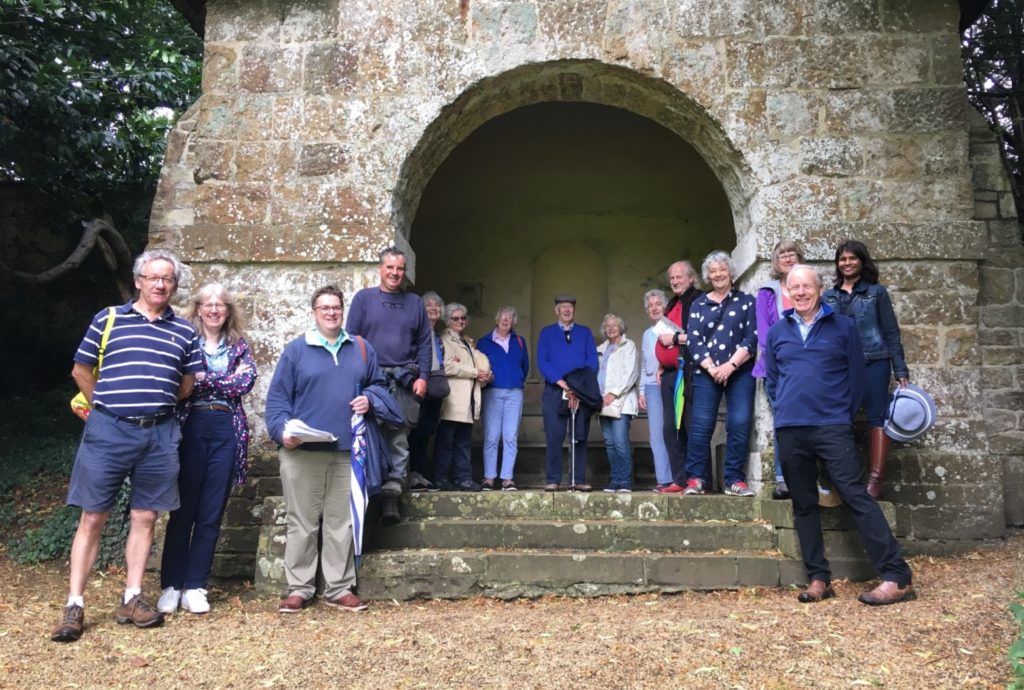
A group of BGT members were very lucky that Charles Boot made one of his rare forays out of Aylesbury to guide us round Rousham Park.
Robert Dormer employed Bridgeman to lay out the gardens and when General James Dormer inherited from his brother in 1737 he saw the garden as an ideal setting for his antique statues. The General commissioned William Kent to naturalise the garden.
Charles led the walk following the route laid out by James Dormer to show the gardens to visitors; at each point he wove a description of the garden taken from a letter written by John (Mac)Clary, the gardener, to Sir Clement Cottrell , a cousin who inherited from James Dormer in 1741. This is a delightful description framed as a plea to the family to visit, and a reminder of ‘what a place Rousham is’.
After picnicking under the Praereste arcade, 80 feet long, and formerly fronted by a balustrade, we started the walk on the Bowling Green, where the statue of the Lion leads the eye out over the concave slope to the water meadows beyond the Cherwell . Rousham benefits from the land beyond which does not form part of the estate. Many of the views looking out towards the Eye Catcher, on the far hill, and the Gothick corn mill have been screened by trees that have grown, and the eye catcher itself is now set against trees where it would have been a bare hillside. The statues along the river look outwards but there are two points by the river where the eye would have turned the other way to the Praereste and the theatre.
We turned left and looked out over the roof of the Praereste, seeing the same view as from the top of the great slope. We walked to the Palladian Gate skirting the paddock, bounded by a ha ha dividing it from the gardens, which at the time of Clary’s letter contained ‘two fine Cows, two Black Sows, a Bore and a Jack Ass’. From there the serpentine walks leads down to the river with the Heyford bridge to the left.
Where there are now laurel hedges Clary describes flowers such as honeysuckle, lilac, roses and syringe intermingled so that they looked as they were springing from the evergreens.
Walking back along the river bank there is a grove of tree to the right, prompting one to view the river to the left and then at the end of the trees to look up to the right through Venus Vale where Clary is also very admiring of the fountains that used to throw up jets of 50 and 30 feet drawing the eye up the slope towards the figure of Venus backed by evergreen trees.
At many points along this walk there are structures, a pavilion, garden seats, a pyramid and places to take in the views. From the pyramid, the views of the river curving up stream to the bridge would have been idyllic when there was less greenery to obscure the view.
Beyond the pyramid and a spring, the path leaves the river and leads up the slope to the door into the walled kitchen garden where the 12 foot high brick walls made the air several degrees warmer. Beyond the kitchen garden lies the pigeon house garden with a parterre, access to the church and finally to the dairy yard. From this yard a gravel path leads to the right round to the former entrance to the house, and left to the stables. Our final extract from Clary’s letter praised ‘as pretty a set of pigg Stighs, as aney is in England’, and described a hen turkey with 18 young, 24 fine chickens ready for the spit and others nursing 66 babies and no less than 40 ducklings swimming after the old ducks. Clary then switches from this picture of avian abundance to an afterthought about a place in the gardens where you can see four counties and ten parish churches.
It was a perfect day for a guided walk as the rain had stopped and it was warm with a slight breeze and clear views across the valley. Charles was an informed and skilful guide and also drew on work by Mavis Batey to supplement Clary’s description and his own knowledge
Report by Liza Wormell
Guide Charles Boot
Photographs by Jug Parmar: 07 413 063 136

